
views
- Rock climbing is a broad category of sports that involve using your hands and feet to ascend a wall or rock face, and often requires safety equipment like ropes and anchors.
- Bouldering is a form of rock climbing that involves lower walls and more technical movements, and is done without ropes or harnesses.
- Rock climbing tends to require more stamina and works the legs, while bouldering is more active in bursts and better engages the upper body.
- Rock climbing tends to involve fewer but more dramatic risks and accidents, while bouldering often involves more frequent but less severe injuries.
Bouldering vs Rock Climbing: An Overview
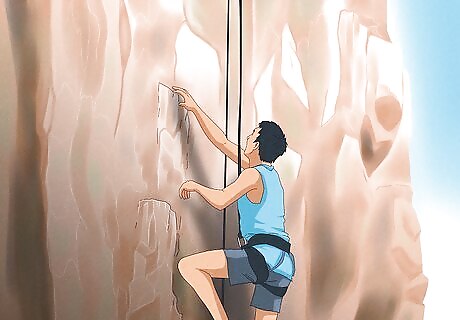
Rock climbing is any sport that involves scaling a rock face. It’s a broad category of many other activities and techniques, all of which focus on using your hands and feet to climb a wall in either a gym or an outdoor setting. It’s also called “rope climbing,” since that’s one key distinction from bouldering. There are many different categories under the “rock climbing” umbrella (including bouldering), like: Top-rope climbing: A broad subcategory of rock climbing in which a climber is attached to a rope that goes up to the top of the wall, then loops back down to a belayer, who holds the rope to catch the climber in the event of a fall. Sport climbing: Sport climbing is one of the most common forms of rock climbing, and involves using ropes to ascend a wall that has pre-drilled bolts used for anchoring yourself as you climb. Traditional climbing: Traditional climbing is much like sport climbing, but is typically performed outside and requires climbers to attach their own temporary anchors and safety gear to a rock face as they climb. Alpine climbing/Mountaineering: This is a form of traditional climbing done outside, above a mountain’s treeline. It often involved hiking to the climbing destination, or climbing as a smaller part of a larger expedition. Free soloing: Free soloing is essentially traditional climbing, but without the gear—just the climber and the mountain!
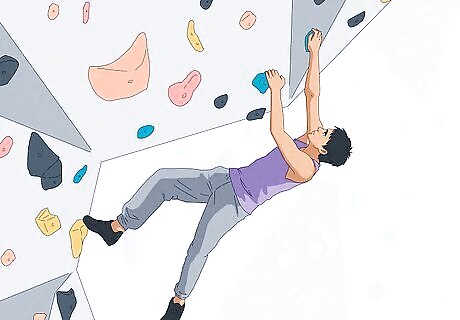
Bouldering is rock climbing done without ropes on lower walls. Bouldering is often performed in a gym, or outdoors on boulders or short outcroppings. Rather than an extended course, bouldering often involves short “problems,” or puzzle-like routes that challenge climbers to ascend a low wall (usually about 12–15 ft (3.7–4.6 m)) in a particular way. Though it’s done on a smaller physical scale, bouldering requires its own specific gear (like crash pads), utilizes more explosive climbing techniques, and provides a more intense upper-body workout.
Style and Techniques
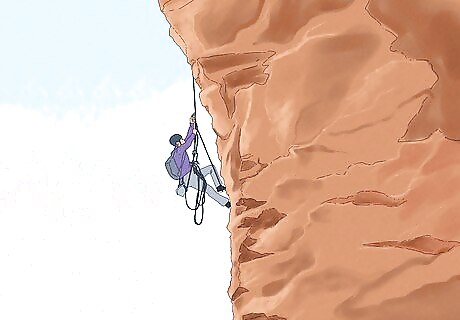
Rock climbing relies more on endurance. Since rock climbers are scaling taller heights and are often on the wall for extended periods of time, the sport requires training to maintain a fair bit of stamina. This means that rope climbers often focus on steadier, more consistent movement during their climbs, so that they can conserve enough energy throughout the climb to summit the wall.

Bouldering relies more on strength. Though done in shorter bursts, bouldering problems often challenge a climber’s grip, strength, and movement techniques more intensely than rock climbing. In addition, climbers that primarily boulder have been found to possess greater overall strength than climbers who primarily rope climb. Since bouldering challenges a climber’s strength, it’s a great way to train for rock climbing, since the skills practiced while bouldering translate well to rock climbing.

Both rock climbing and bouldering work the same muscle groups. Though the 2 sports have different focuses when it comes to strength and endurance, both sports work largely the same areas of your body, since they’re essentially the same activity. Both sports engage your body’s entire muscle system and improve flexibility and cardiorespiratory fitness. That said, the 2 tend to develop slightly different areas of the body: Rock climbing works the legs more intensely, since it requires climbers to propel and steady themselves using primarily their legs. It also trains your “slow-twitch” muscle fibers, which are parts of your muscles used for sustained strain. Bouldering helps build upper-body muscles, since boulderers focus more on explosive movements and upper-body maneuvering to navigate the wall. Bouldering also trains your “fast-twitch” muscle fibers, which are responsible for faster, more powerful movements.
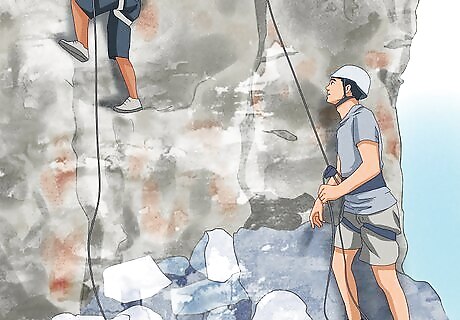
Rock climbing requires another person to act as a spotter. Rope climbers need someone on the ground holding the other end of the rope so that the spotter can save the climber in the event of a fall. Since it requires at least 2 people to be performed safely, rock climbing has a higher barrier to entry. That said, it’s a great trust and communication building activity.
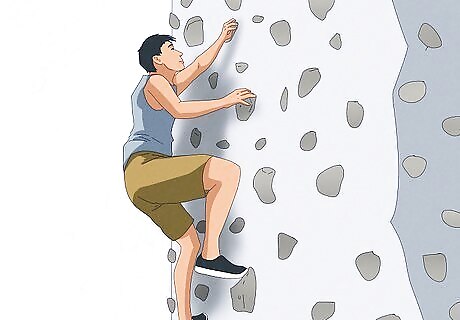
Bouldering can be done solo, but is often a community activity. Since bouldering is done at a lower height from the ground, it doesn’t require a spotter and can be done alone. On the other hand, since the climber is within sight and earshot of people on the ground, bouldering often fosters a communal atmosphere, where observers might offer tips or encouragement to the climber. Boulderers also often have spotters that stay on the ground and follow the climber to break their fall in the event of a mistake.
Gear
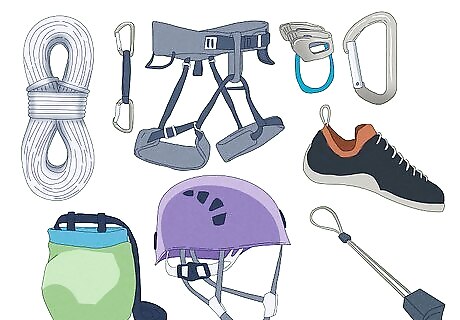
Rock climbing requires ropes, harnesses, and other safety gear. It also requires climbing shoes, chalk, and helmets. These are necessary to keep climbers secure and protected while they’re scaling tall heights. Because of the greater amount of equipment, rock climbing is often more expensive than bouldering. You’ll also need to dress right for rock climbing, with flexible and sturdy clothing.
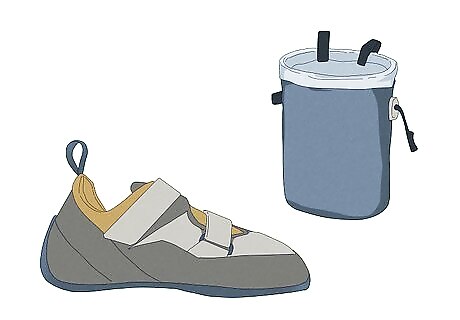
Bouldering requires only climbing shoes and chalk. In outdoor settings, you also need a crash pad, or a cushioned surface to catch you if you fall. Since bouldering requires less gear, it’s often considered much more accessible and spontaneous than traditional climbing.
Grading Systems
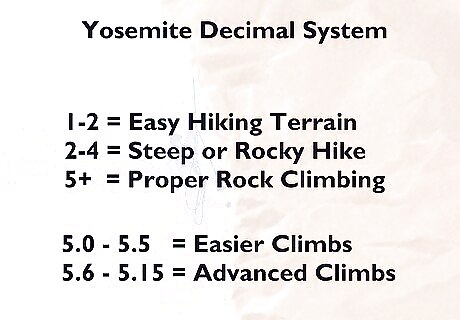
Rock climbing difficulty is graded on the Yosemite Decimal System. The YDS ranks how difficult it is to traverse various terrains (not just climbing walls). According to the YDS, grades 1-2 are akin to easy hiking terrain, 2-4 are similar to a steep or rocky hike, and 5+ refers to proper rock climbing. Grades of 5 are divided into decimals from 5.0 to 5.15. Lower decimals (5.0-5.5) are easier climbs, while higher decimals refer to more advanced routes. In addition, letters may be added to the decimal to further identify the difficulty. For example, a 5.9a route is slightly easier than a 5.9b route. This letter system ends at “d,” after which the system moves to the next numerical decimal (in this case, 5.10).

Bouldering difficulty is graded on the V scale. The V scale starts at V0, which indicates an easy, beginner-friendly climbing route. From there, the scale usually ascends to V17, which is the most difficult and only attempted by world-class climbers, though the scale may increase in the future as harder bouldering problems are found or created. The V scale is sometimes accompanied by “+” or “-,” which indicate a route is a bit harder or easier than the indicated number, respectively. The V scale is also sometimes called the “Verm” or “Vermin” scale, named for John “Vermin” Sherman, a climber who conceived the scale in the late ‘80s.
Risks and Injury
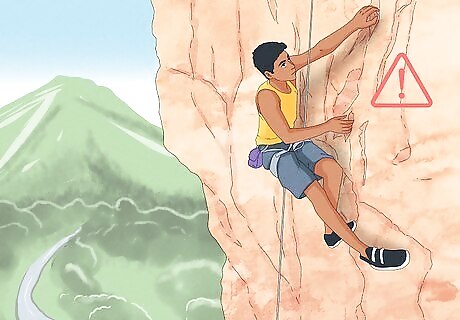
Rock climbing is statistically safer, but has higher stakes. Rope climbers take numerous precautions to prevent any drastic falls, including things like safety gear and spotters. These precautions make for fewer overall mishaps. However, since rock climbing is done at greater heights, mistakes can be incredibly dangerous or even fatal when they do occur.
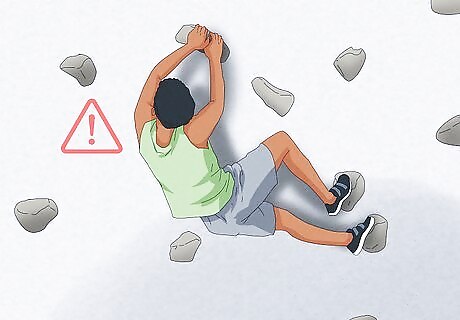
Bouldering is statistically more dangerous, but has lower stakes. Falls are much more likely while bouldering, since there aren’t any safety mechanisms keeping you aloft. However, since boulderers are typically at a lower height, falls are much less likely to result in dramatic or fatal injuries. In addition, the higher-intensity movement involved in bouldering can make for more frequent stress injuries like sprained joints or pulled muscles.
Which is the better choice for you?
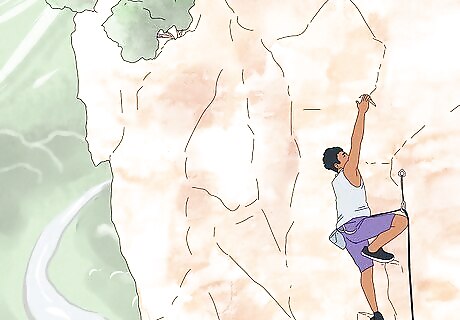
Choose rock climbing for a more thrilling and extreme sport. Since rock climbing is associated with taller heights, outdoor locations, and a more intense sense of danger, it’s often considered the more extreme of the 2 sports. It’s a great choice for people who have money or access to prime outdoor rock climbing locations, like mountainous areas. Rock climbing also often requires a certain amount of training and education before you can get on the wall. Many gyms require that you take classes or become certified before you can use their facilities.

Choose bouldering for a cheaper and more beginner-friendly sport. Bouldering is often considered a much more approachable sport, since it requires little equipment, doesn’t require a partner or spotter, and is less daunting due to its low climbing height. It also helps build skills that translate to every other form of climbing. Many gyms allow total beginners to use their bouldering walls, given that newcomers familiarize themselves with bouldering etiquette beforehand.



















Comments
0 comment